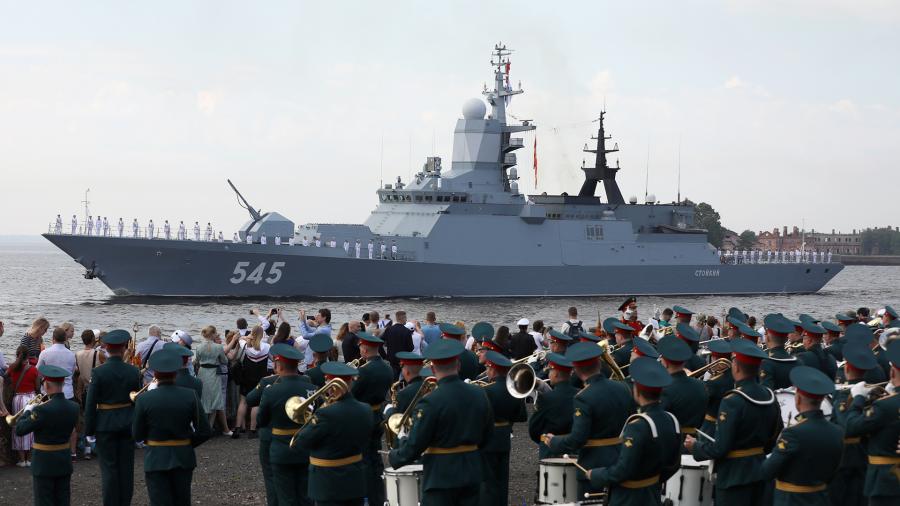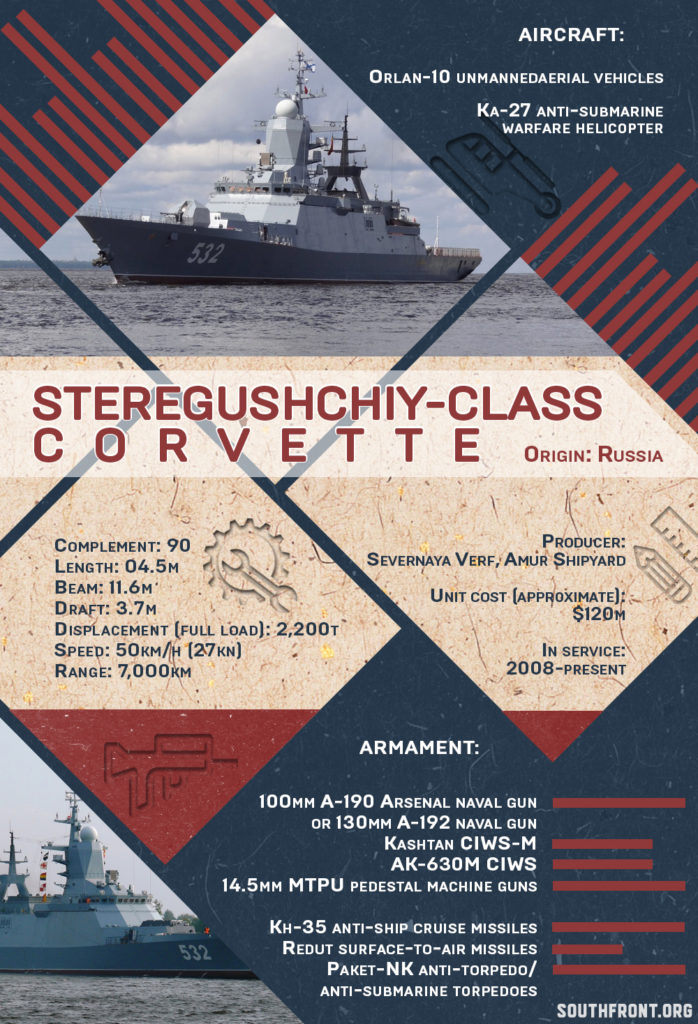The Russian cities of Kaliningrand and St. Petersburg to the north of the country, and Sevastopol to the south will be protected by project 20380 corvettes equipped with the Zaslon radar system.
The two warships that are currently being constructed – Retiviy and Strogiy will both be equipped with the system and will be used to protect the coastal cities.
The Zaslon radar system is capable of detecting surface, land, sea and air targets within a radius of 75 km. The specific geography of the Black Sea and the Baltic sea allow the system to “keep an eye” on the military bases of several European NATO countries at once.
Russian experts believe that the new warships will assist in the reliable protection of the Russian coastal cities and objects from massive attacks from ground-based cruise missiles.
The new Zaslon radar stations are already mounted on the two latest project 20380 corvettes, sources in the military department told Izvestia. The United Shipbuilding Corporation specified that the ships will be ready within the deadlines set in the contracts.
The complexes will allow air defense systems to confidently repel the attacks of unmanned aerial vehicles, stealth aircraft and cruise missiles, which generally fly at a low altitude.
There is a necessity for such systems, ever since the INF Treaty fell through in August 2019, when the US withdrew from it. At the same time, the European countries of NATO refused to accept the mutual moratorium proposed by Russia on the deployment of short and intermediate-range missiles in Europe and the European part of Russia.
“Therefore, it is impossible to exclude the possible deployment of American winged or hypersonic ammunition on the continent,” Vadim Kozyulin, a professor of the Academy of Military Sciences said.
“The geography of the Baltic and Black Seas allows the radar complex of modernized corvettes to “look” deep into the territory of several countries of the North Atlantic Alliance. This will make it possible in peacetime to keep an eye on the military bases of a potential enemy, and in wartime – to take operational measures.”
These countries include Romania and Poland. Romania hosts the Aegis Ashore missile defense system, which could easily be repurposed to launch Tomahawk missiles, and work is being carried out on the deployment of an Aegis Ashore in Poland.
The new Zaslon radar, in appearance, looks like a pyramid, with a large number of faces, and it is fixed at the base of the warship’s mast.
Behind each face are stationary transceivers that track the movements of ships and aircraft. The new equipment provides military radar operators with the opportunity to receive an accurate and continuous picture of the air, surface and ground conditions in real time on the station’s screens.
On a traditional radar, the radar image is interrupted due to the fact that the transmitting-receiving unit rotates.
In addition, the new complex includes hardware, a command post, high-frequency and radio equipment facilities.
Zaslon can pinpoint and identify low-flying and small-sized targets at a much greater distance, without issue. Stealth-made aircraft with an effective dispersion area of 1m can be detected by the radar at a 75 km distance, while simpler aircraft and missiles can be detected at up to 300 km.
To protect against air attacks, the Redut anti-aircraft missile system will be installed on the corvettes, which is the most powerful air defense system, currently operating on ships in the Russian Navy.
It can simultaneously hit 16 targets at a distance of up to 400 km. “Redutt” will allow for the protection of coastal cities, naval bases or especially sensitive and important facilities.
It appears that all of this additional state-of-the-art equipment may be the reason that many of the Russian warships experience delays in their constructions.
Additional information on the project 20380 corvette can be found in the infographic below:
MORE ON THE TOPIC:








Nice to see that the Russian navy is progressing with it’s modernization plans. Can’t wait to see the first Lieder class destroyer, but it seems like that project might take some time to materialize.
You will have to wait for “Lider” very long time…if it ever is going to be built. I have red quite few articles where that project was abandoned and replacement
is Project 22350 “M”
As much cheaper (and faster to build) solution for Navy.
The modernization of the frigate and enlargement into 7000 tons destroyers is much simpler and faster solution to build bigger ships than to start to build the new from scratch (which would be the case with “Leader”) heavy cruiser.
Atomic heavy cruiser are beautiful and very powerful ships but also extremely (prohibitively) expensive (Just like Jasen attack subs)
So Russia (again) goes for optimal cheaper
(big bang for buck )solution.
Also they will have “Admiral Nakhimov”with 200 launch missile tubes and Zircon hyper-sonic missiles in 2 years at the latest.
And “Peter the Great” is also due for the same overhaul after “Nakhimov” with naval S-500 and Zircon combo.
Problem with the Aegis is that it generated too much heat & you can’t cool it down easy like the ship engine which is at bottom of the ship & sea water is a great coolant. I wonder whether Russians have solved that cooling problem or not, otherwise its mast will be glowing on the thermal cams.